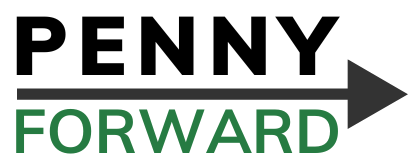In this lesson you’ll learn how making extra payments saves you money while paying off your debts faster.
Non-revolving Debt
Some types of debt, such as mortgages, car loans, or personal loans, have fixed terms and, often, fixed monthly payments. You’ll eventually pay them off as long as you don’t miss any of your monthly payments, and you can pay them off more quickly if you make larger payments.
Revolving Debt
We call credit cards and other lines of credit “revolving debt” because you can immediately borrow more money as soon as you’ve paid some of it back. Credit card companies require you to make minimum payments that seem very low at first, but rise over time.
Why Make Extra Payments?
It’s typically ok to make extra payments. This saves you money and pays off your loans early. This NerdWallet Article explains that you can pay a $5000 credit card balance, at 16 percent APR, in half the time simply by paying $150 a month instead of $100 a month. If you have multiple bills, though, it can make sense to focus on paying extra toward one bill at a time until it’s paid off. There are two popular approaches for doing this: the debt avalanche method and the debt snowball method. To use either method, it’s important to know the interest rates of each of your loans and credit cards first.
What Is Interest?
When you borrow money, lenders charge you fees called interest. The loan or credit card’s interest rate, often called the annual percentage rate, or APR, tells you how high those fees are. A 23 percent APR, for example, means that you’ll need to pay 23 cents per year for every dollar you haven’t paid back yet, and a 2 percent APR means that you’ll need to pay 2 cents per year for every dollar you haven’t paid back yet. The money you haven’t paid back yet is often called the principal. Making larger payments pays off the principal more quickly meaning that you’ll need to pay less in interest fees. Use this online credit card repayment calculator from Bankrate to try out the examples below for yourself.
Example: Low APR
Chris uses a credit card with a 2 percent APR to pay for a $1000 computer. If he pays the $29 a month on his bill, it will take him three years to pay off the card. He will also have paid $30 in interest. If, however, he pays $58 a month, he will pay off his card in one year and 6 months and paid only $15 in interest.
Example: High APR
Kelly uses a credit card with a 23 percent APR to pay for the same $1000 computer. If she pays the $29 a month on her bill, it will take her four years and nine months to pay off her card. She will also have paid $652 in interest. If, however, she pays $58 a month, She will pay off her card in one year and 10 months and paid only $225 in interest.
